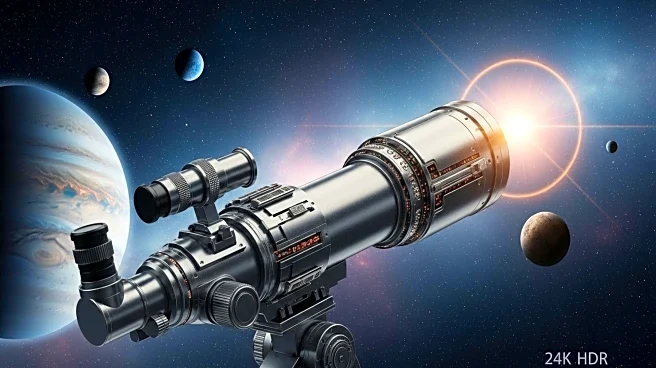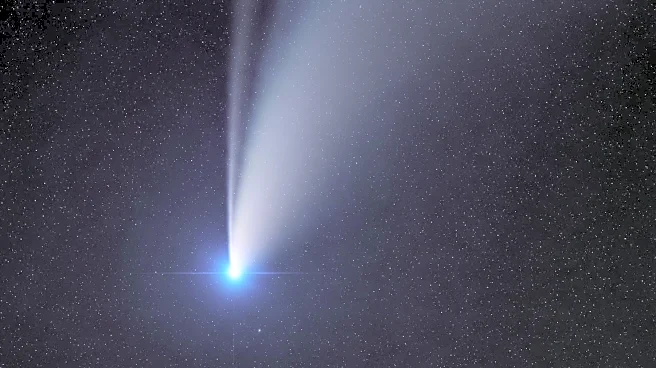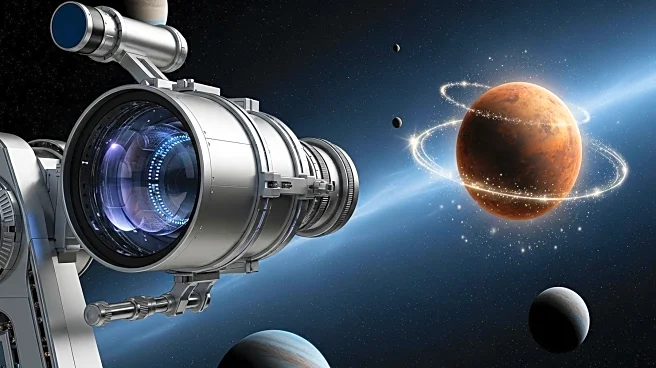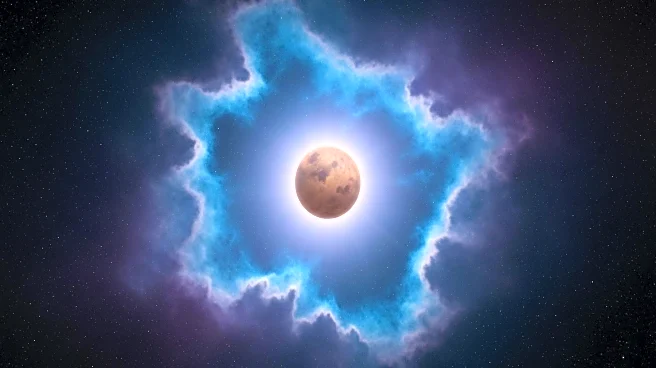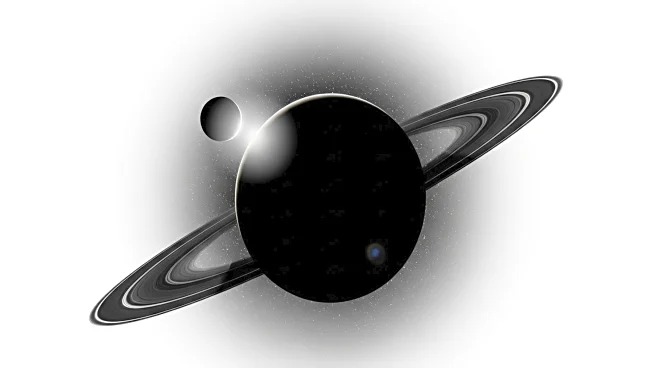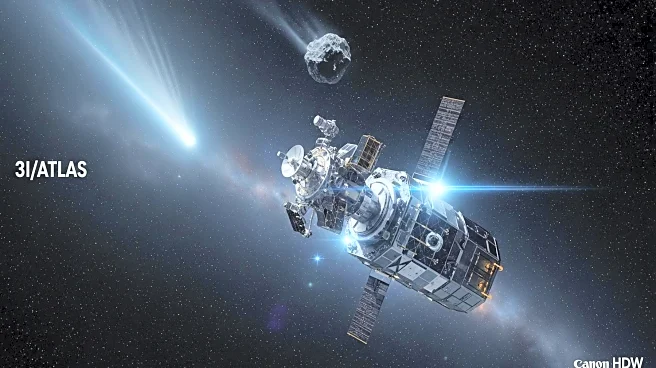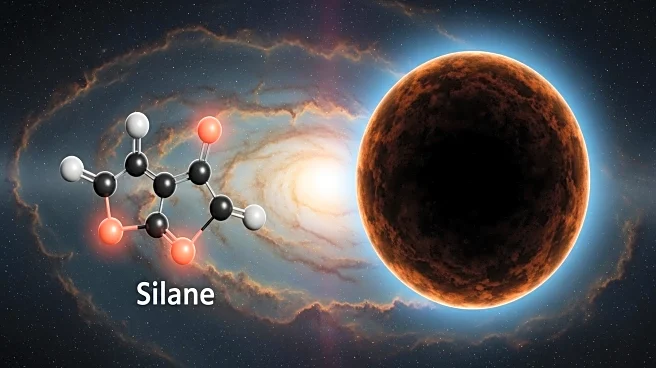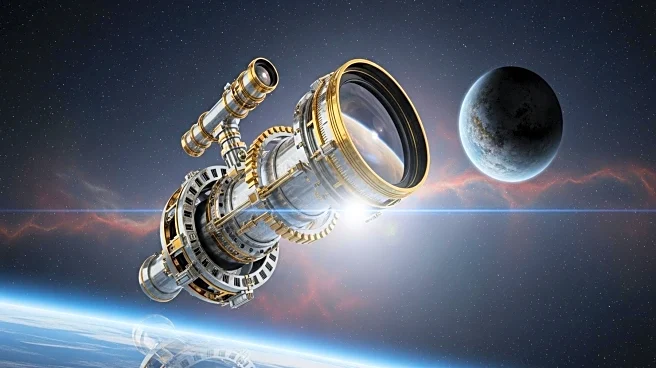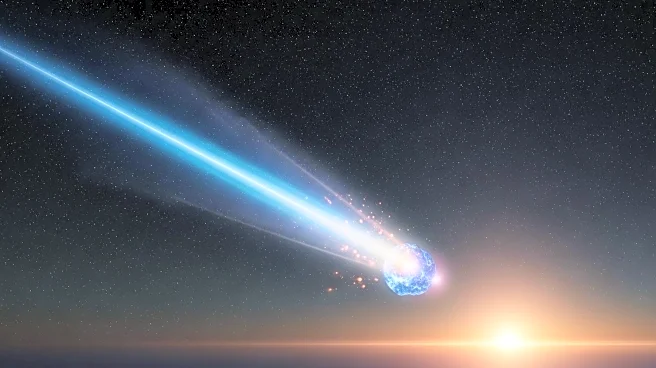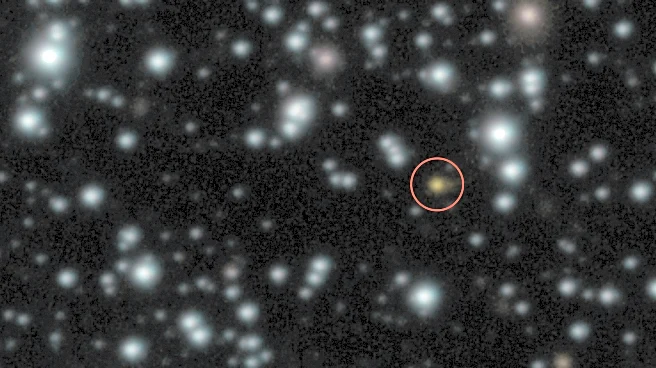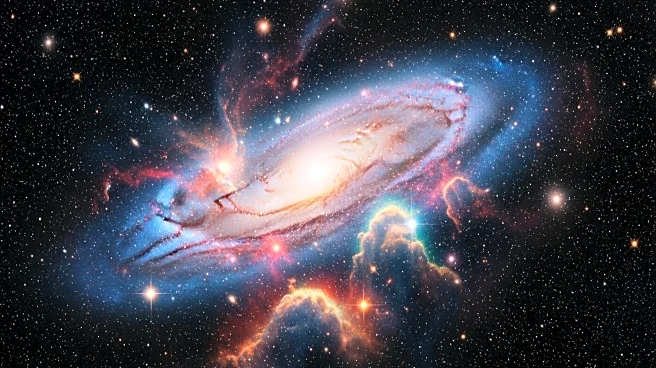What is the story about?
What's Happening?
The James Webb Space Telescope (JWST) has studied a brown dwarf, nicknamed 'The Accident,' which may help solve mysteries surrounding Jupiter and Saturn. Brown dwarfs are 'failed stars' that lack the mass to sustain nuclear fusion. 'The Accident,' located 50 light-years away, is one of the oldest brown dwarfs observed, exhibiting features of both young and ancient failed stars. JWST's observations revealed the presence of silane, a molecule expected in gas giants but previously undetected. This discovery could provide insights into the atmospheric chemistry of Jupiter and Saturn.
Why It's Important?
The detection of silane in 'The Accident' suggests that silicon molecules may form in planetary atmospheres, offering clues about the conditions and chemistry of gas giants. This research enhances understanding of brown dwarfs as proxies for studying exoplanet atmospheres, potentially aiding in the search for habitable conditions on distant planets. The findings challenge existing models and highlight the importance of studying extreme objects to understand average planetary systems.
Beyond the Headlines
The study of 'The Accident' demonstrates the utility of brown dwarfs in investigating exoplanet habitability conditions, despite their inability to support life. This research sets the stage for future chemical analysis of potentially Earth-like planets, preparing scientists for complex data interpretation in the quest for life beyond Earth.
AI Generated Content
Do you find this article useful?
